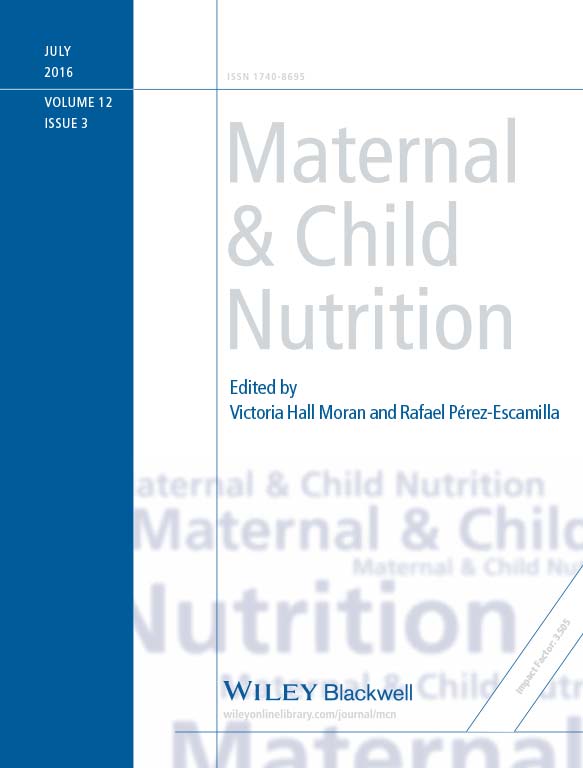This article was published in the Maternal & Child Nutrition Supplement: Availability, Promotion and Consumption of Commercial Infant Foods
Abstract: Commercially produced complementary foods can help improve nutritional status of young children if they are appropriately fortified and of optimal nutrient composition. However, other commercially produced snack food products may be nutritionally detrimental, potentially increasing consumption of foods high in salt or sugar and displacing consumption of other more nutritious options. Helen Keller International, in collaboration with the Nepal government, implemented a study to assess mothers’ utilization of commercial food products for child feeding and exposure to commercial promotions for these products. A cross-sectional survey was conducted among 309 mothers of children less than 24 months of age across 15 health facilities. Utilization of breastmilk substitutes was low, having been consumed by 6.2% of children 0–5 months of age and 7.5% of children 6–23 months of age. Approximately one-fourth (24.6%) of children 6–23 months age had consumed a commercially produced complementary food in the prior day. Twenty-eight percent of mothers reported observing a promotion for breastmilk substitutes, and 20.1% reported promotions for commercially produced complementary foods. Consumption of commercially produced snack food products was high at 74.1% of children 6–23 months. Promotions for these same commercially produced snack food products were highly prevalent in Kathmandu Valley, reported by 85.4% of mothers. In order to improve diets during the complementary feeding period, development of national standards for complementary food products is recommended. Nutritious snack options should be promoted for the complementary feeding period; consumption of commercially produced snack food products high in sugar and salt and low in nutrients should be discouraged.
Authors: Alissa M. Pries, Sandra L. Huffman, Indu Adhikary, Senendra Raj Upreti, Shrid Dhungel, Mary Champeny and Elizabeth Zehner
View Resource
